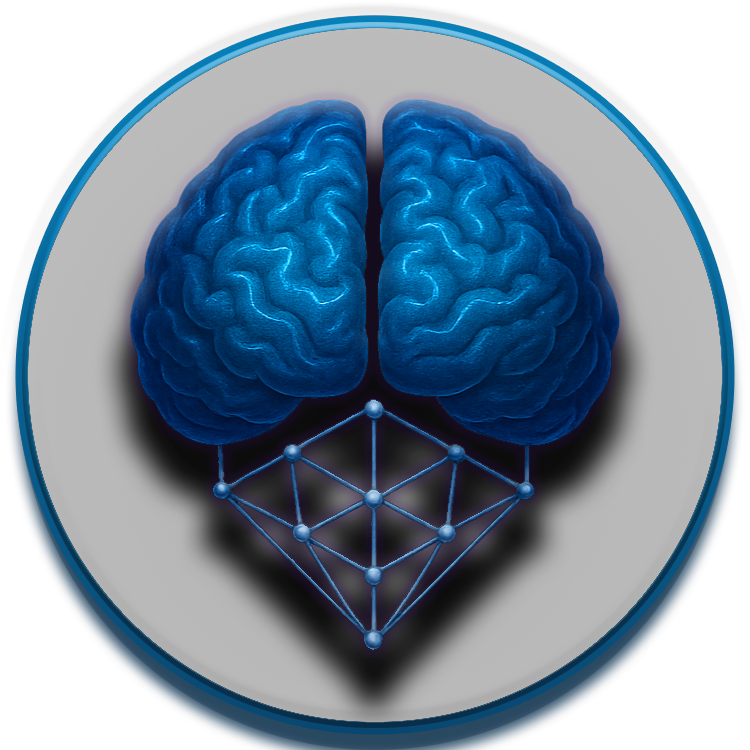
Attention Management Architecture¶
This diagram provides a detailed view of the NeuroCognitive Architecture (NCA) attention management subsystem.
%%{init: {'theme': 'dark', 'themeVariables': { 'primaryColor': '#242424', 'primaryTextColor': '#fff', 'primaryBorderColor': '#555', 'lineColor': '#f8f8f8', 'secondaryColor': '#2b2b2b', 'tertiaryColor': '#1a1a1a'}}}%%
graph TB
classDef main fill:#1a1a1a,stroke:#555,color:#fff
classDef component fill:#242424,stroke:#555,color:#fff
classDef subcomponent fill:#2b2b2b,stroke:#555,color:#fff
classDef attention fill:#203040,stroke:#555,color:#fff
classDef sensory fill:#302030,stroke:#555,color:#fff
classDef resource fill:#203020,stroke:#555,color:#fff
classDef external fill:#302020,stroke:#555,color:#fff
subgraph AttentionSystem["Attention Management System"]
direction TB
class AttentionSystem main
subgraph CoreComponents["Core Attention Components"]
direction TB
class CoreComponents component
subgraph FocusControl["Focus Control"]
direction TB
class FocusControl attention
SpotlightManager[Attention<br>Spotlight] --- FocusShifting[Focus<br>Shifting]
SustainedAttention[Sustained<br>Attention] --- DividedAttention[Divided<br>Attention]
class SpotlightManager,FocusShifting,SustainedAttention,DividedAttention subcomponent
end
subgraph SensoryFiltering["Sensory Filtering"]
direction TB
class SensoryFiltering sensory
BottomUpFiltering[Bottom-Up<br>Filtering] --- TopDownRegulation[Top-Down<br>Regulation]
NoiseReduction[Noise<br>Reduction] --- SignalEnhancement[Signal<br>Enhancement]
class BottomUpFiltering,TopDownRegulation,NoiseReduction,SignalEnhancement subcomponent
end
subgraph SalienceDetection["Salience Detection"]
direction TB
class SalienceDetection attention
NoveltyDetector[Novelty<br>Detector] --- RelevanceEvaluator[Relevance<br>Evaluator]
EmotionalSalience[Emotional<br>Salience] --- GoalSalience[Goal<br>Salience]
class NoveltyDetector,RelevanceEvaluator,EmotionalSalience,GoalSalience subcomponent
end
subgraph AttentionAllocation["Attention Allocation"]
direction TB
class AttentionAllocation resource
ResourceManager[Resource<br>Manager] --- PriorityQueue[Priority<br>Queue]
DynamicAllocation[Dynamic<br>Allocation] --- CostBenefitAnalyzer[Cost-Benefit<br>Analyzer]
class ResourceManager,PriorityQueue,DynamicAllocation,CostBenefitAnalyzer subcomponent
end
end
subgraph SpecializedMechanisms["Specialized Mechanisms"]
direction TB
class SpecializedMechanisms component
subgraph IntrusionControl["Intrusion Control"]
direction TB
class IntrusionControl attention
DistractionBuffer[Distraction<br>Buffer] --- IntrusionDetector[Intrusion<br>Detector]
ProtectionMechanisms[Protection<br>Mechanisms] --- IntrusionSuppression[Intrusion<br>Suppression]
class DistractionBuffer,IntrusionDetector,ProtectionMechanisms,IntrusionSuppression subcomponent
end
subgraph ContextualModulation["Contextual Modulation"]
direction TB
class ContextualModulation attention
ContextResolver[Context<br>Resolver] --- ContextualPriming[Contextual<br>Priming]
ExpectationGenerator[Expectation<br>Generator] --- PredictiveAttention[Predictive<br>Attention]
class ContextResolver,ContextualPriming,ExpectationGenerator,PredictiveAttention subcomponent
end
end
subgraph AttentionalStates["Attentional States"]
direction TB
class AttentionalStates component
VigilantState[Vigilant<br>State] --- FocusedState[Focused<br>State]
DistractedState[Distracted<br>State] --- OverloadedState[Overloaded<br>State]
DiffuseState[Diffuse<br>State] --- RestingState[Resting<br>State]
class VigilantState,FocusedState,DistractedState,OverloadedState,DiffuseState,RestingState subcomponent
end
subgraph AttentionMonitoring["Attention Monitoring"]
direction TB
class AttentionMonitoring component
PerformanceMonitor[Performance<br>Monitor] --- EfficiencyAnalyzer[Efficiency<br>Analyzer]
FatigueDetector[Fatigue<br>Detector] --- AdaptiveRegulator[Adaptive<br>Regulator]
class PerformanceMonitor,EfficiencyAnalyzer,FatigueDetector,AdaptiveRegulator subcomponent
end
end
%% External connections
ExecutiveControl[Executive<br>Control] --> FocusControl
WorkingMemory[Working<br>Memory] --> ContextualModulation
SensoryInput[Sensory<br>Input] --> SensoryFiltering
HealthSystem[Health<br>System] --> AttentionMonitoring
%% Internal connections
SensoryFiltering --> SalienceDetection
SalienceDetection --> FocusControl
FocusControl --> AttentionAllocation
AttentionMonitoring --> AttentionalStates
AttentionalStates --> AttentionAllocation
IntrusionControl --> SensoryFiltering
IntrusionControl --> FocusControl
ContextualModulation --> SalienceDetection
ContextualModulation --> FocusControl
%% Output connections
AttentionAllocation --> ResourceOutput[Resource<br>Allocation]
FocusControl --> AttentionOutput[Attention<br>Guidance]
%% Node styling
class ExecutiveControl,WorkingMemory,SensoryInput,HealthSystem,ResourceOutput,AttentionOutput externalAttention Management Architecture Components¶
The NCA attention management subsystem provides mechanisms for directing and controlling attention, allowing the system to focus on relevant information while filtering out distractions. It consists of the following key components:
Core Attention Components¶
- Focus Control:
- Attention Spotlight: Directs the focus of attention to specific information
- Focus Shifting: Moves attention between different information sources
- Sustained Attention: Maintains focus on a specific target over time
-
Divided Attention: Manages focus on multiple targets simultaneously
-
Sensory Filtering:
- Bottom-Up Filtering: Automatic filtering based on sensory properties
- Top-Down Regulation: Controlled filtering based on goals and expectations
- Noise Reduction: Reduces irrelevant sensory information
-
Signal Enhancement: Enhances relevant sensory information
-
Salience Detection:
- Novelty Detector: Identifies novel or unexpected information
- Relevance Evaluator: Assesses information relevance to current goals
- Emotional Salience: Detects emotionally significant information
-
Goal Salience: Detects information relevant to current goals
-
Attention Allocation:
- Resource Manager: Manages the allocation of attention resources
- Priority Queue: Prioritizes items for attention allocation
- Dynamic Allocation: Adjusts allocation based on changing conditions
- Cost-Benefit Analyzer: Evaluates the costs and benefits of attention allocation
Specialized Mechanisms¶
- Intrusion Control:
- Distraction Buffer: Temporarily holds potential distractions
- Intrusion Detector: Detects unwanted information intrusions
- Protection Mechanisms: Protects focused attention from disruption
-
Intrusion Suppression: Actively suppresses intrusive information
-
Contextual Modulation:
- Context Resolver: Determines the current context for attention
- Contextual Priming: Primes attention based on context
- Expectation Generator: Generates expectations about upcoming information
- Predictive Attention: Directs attention based on predictions
Attentional States¶
The system can be in various attentional states: - Vigilant State: Heightened awareness and alertness - Focused State: Concentrated attention on specific items - Distracted State: Attention disrupted by irrelevant information - Overloaded State: Excessive demands on attention resources - Diffuse State: Broadly distributed, unfocused attention - Resting State: Minimal attentional engagement
Attention Monitoring¶
- Performance Monitor: Tracks the performance of the attention system
- Efficiency Analyzer: Evaluates attention efficiency
- Fatigue Detector: Detects attention fatigue
- Adaptive Regulator: Regulates attention based on current conditions
External Connections¶
The attention management system connects with: - Executive Control: Provides top-down control of attention - Working Memory: Provides context for attention allocation - Sensory Input: Provides information for bottom-up attention - Health System: Provides health state for attention regulation
Output Connections¶
The attention management system produces: - Resource Allocation: Allocation of cognitive resources based on attention - Attention Guidance: Guidance for other systems based on attentional focus
The attention management system is designed to adaptively control information processing, enhancing relevant information and suppressing distractions in a way inspired by human attentional mechanisms.